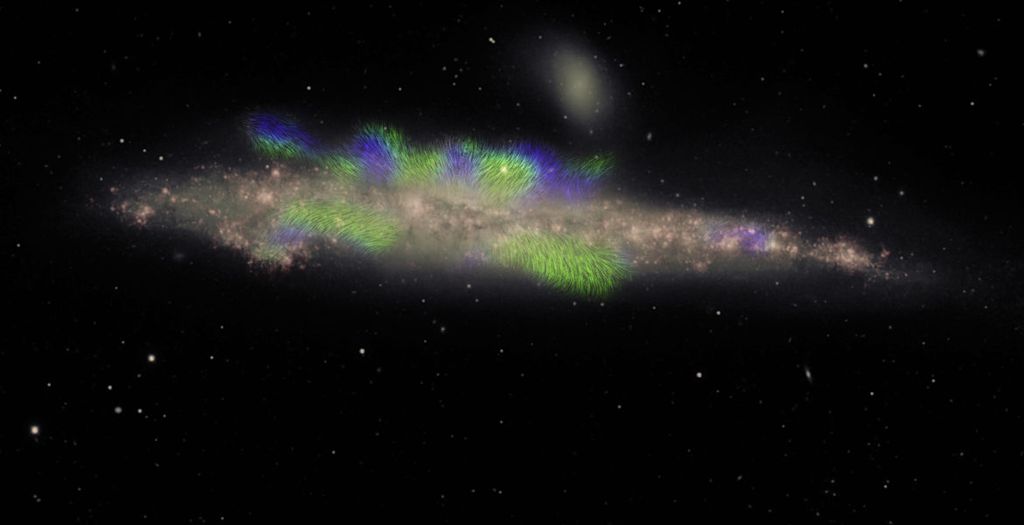If you're feeling all tied up with obligations this holiday season, perhaps a newly studied galaxy feels the same way.
A new image of NGC 4631, more popularly known as the Whale Galaxy, shows ropes of magnetic filaments extending above and below the disk of the galaxy. The filaments, which show up in green and blue in the picture, reach far into the galaxy's halo of gas and dust. The green filaments have a magnetic field pointing away from Earth; the blue ones have a field pointing toward our planet.
Also visible is the galaxy's star disk, which is shown in pink.
The researchers behind the image are still trying to understand how the galaxy's magnetic structure works, according to a statement released with the image. They would like to know how common these sorts of magnetic fields are in galactic halos and what shapes the fields take.
Studying such magnetic fields can also help astronomers understand how galaxies develop magnetic fields, and whether the fluid motion in a galaxy, which scientists call the dynamo effect, generates the magnetic field.
The observations were made with the Karl G. Jansky Very Large Array, a telescope operated by the National Radio Astronomy Observatory (NRAO).
Co-author Richard Henriksen, an astrophysicist at Queen's University in Canada, said in an NRAO statement, we are a little bit like the blind men and the elephant, since each time we look at the galaxy in a different way, we reach a different conclusion about its nature. However, we seem to have one of those rare occasions where a classical theory, about magnetic generators called dynamos, predicted the observations of NGC 4631 quite well," he added. "Our dynamo model produces spiraling magnetic fields in the halo that are a continuation of the normal spiral arms in the galaxy's disc.
The galaxy lies about 25 million light-years away from Earth in the constellation Canes Venatici. It is 80,000 light-years across and has a small companion (NGC 4627). An additional small elliptical galaxy is visible in the new image.
A research paper based on the work, led by Queen's astrophysicist Judith Irwin, was published in the December 2019 issue of Astronomy & Astrophysics. The theoretical models were described in a May 2019 article in the Monthly Notices of the Royal Astronomical Society, led by Queen's graduate researcher Alex Woodfinden.




0 Comments